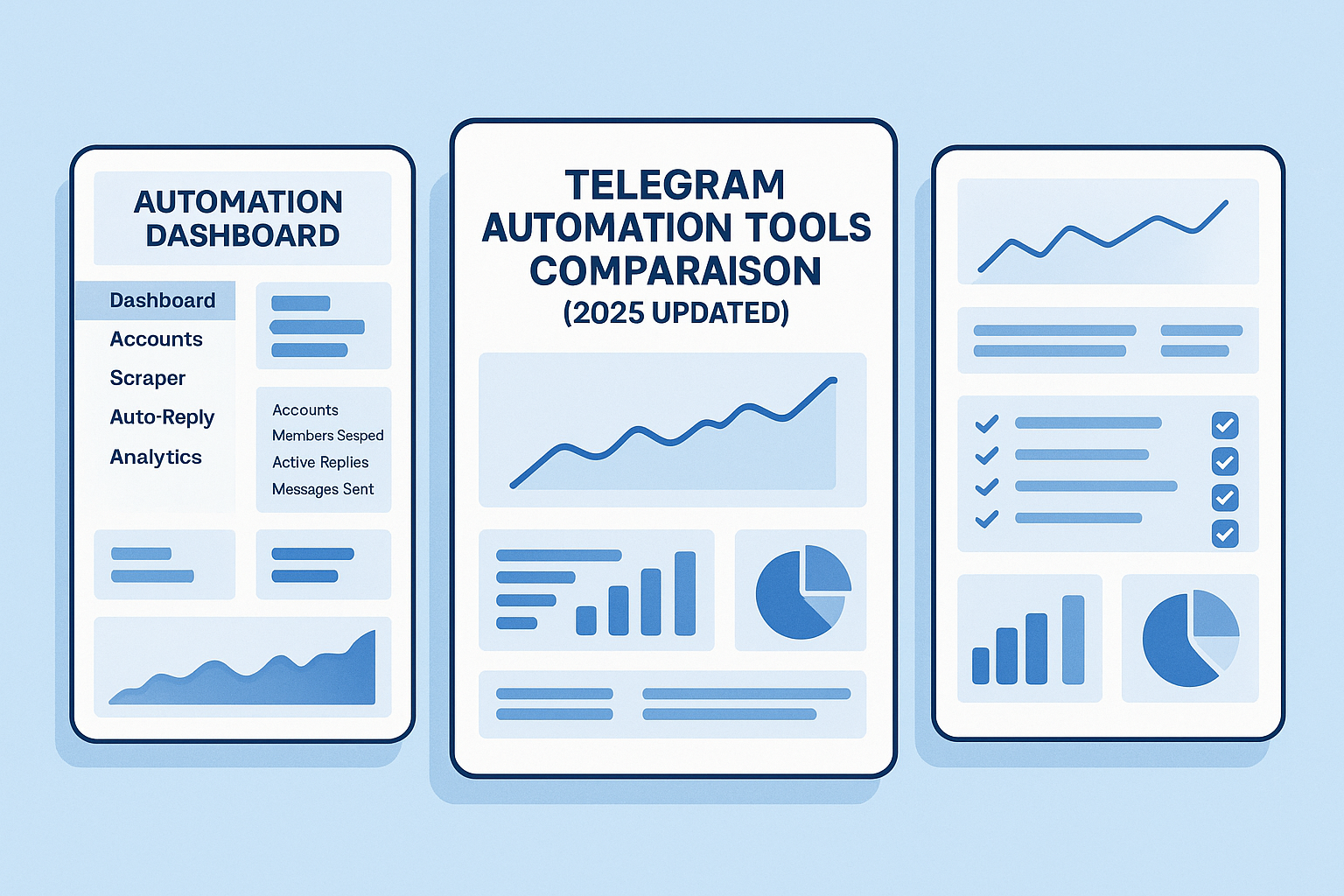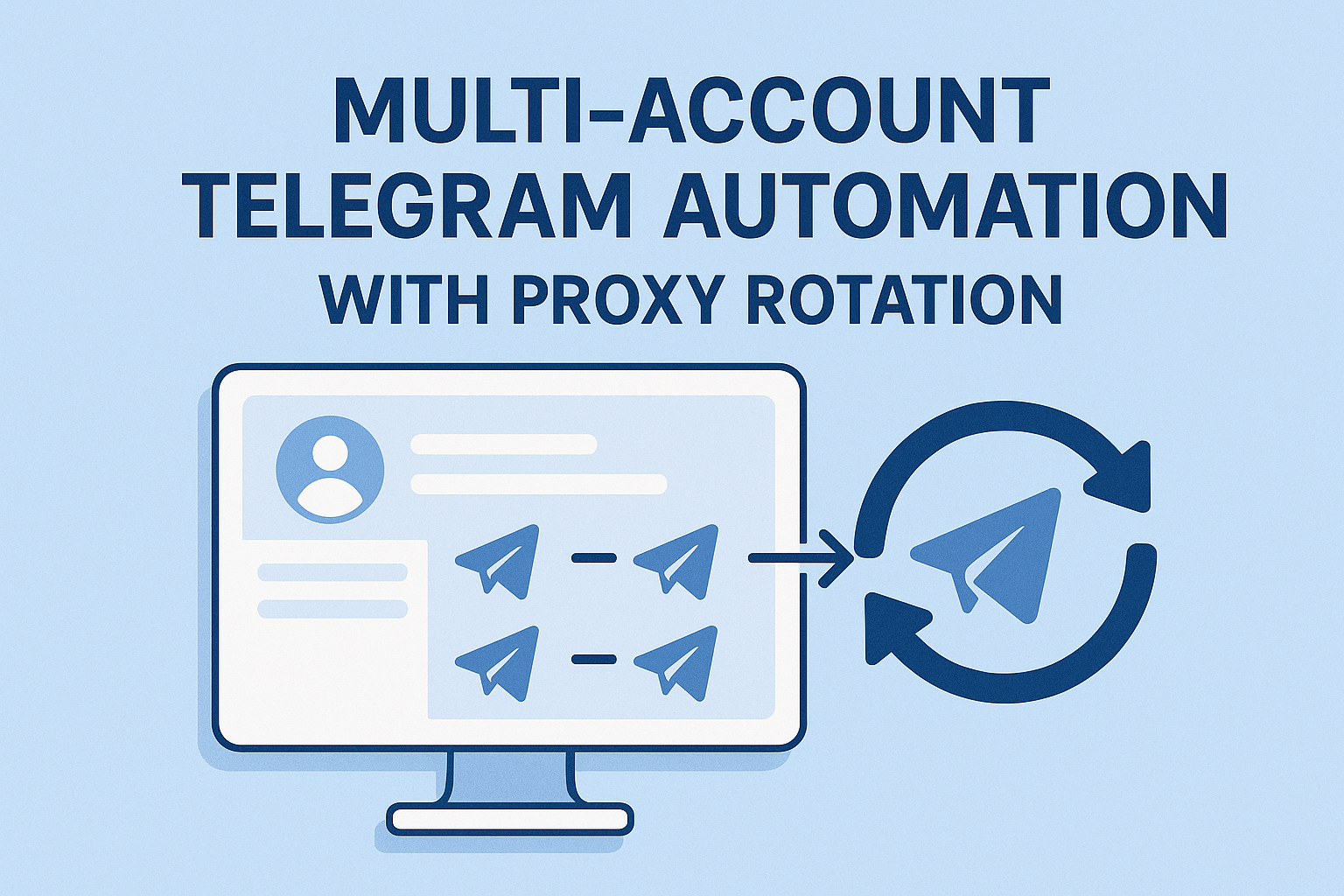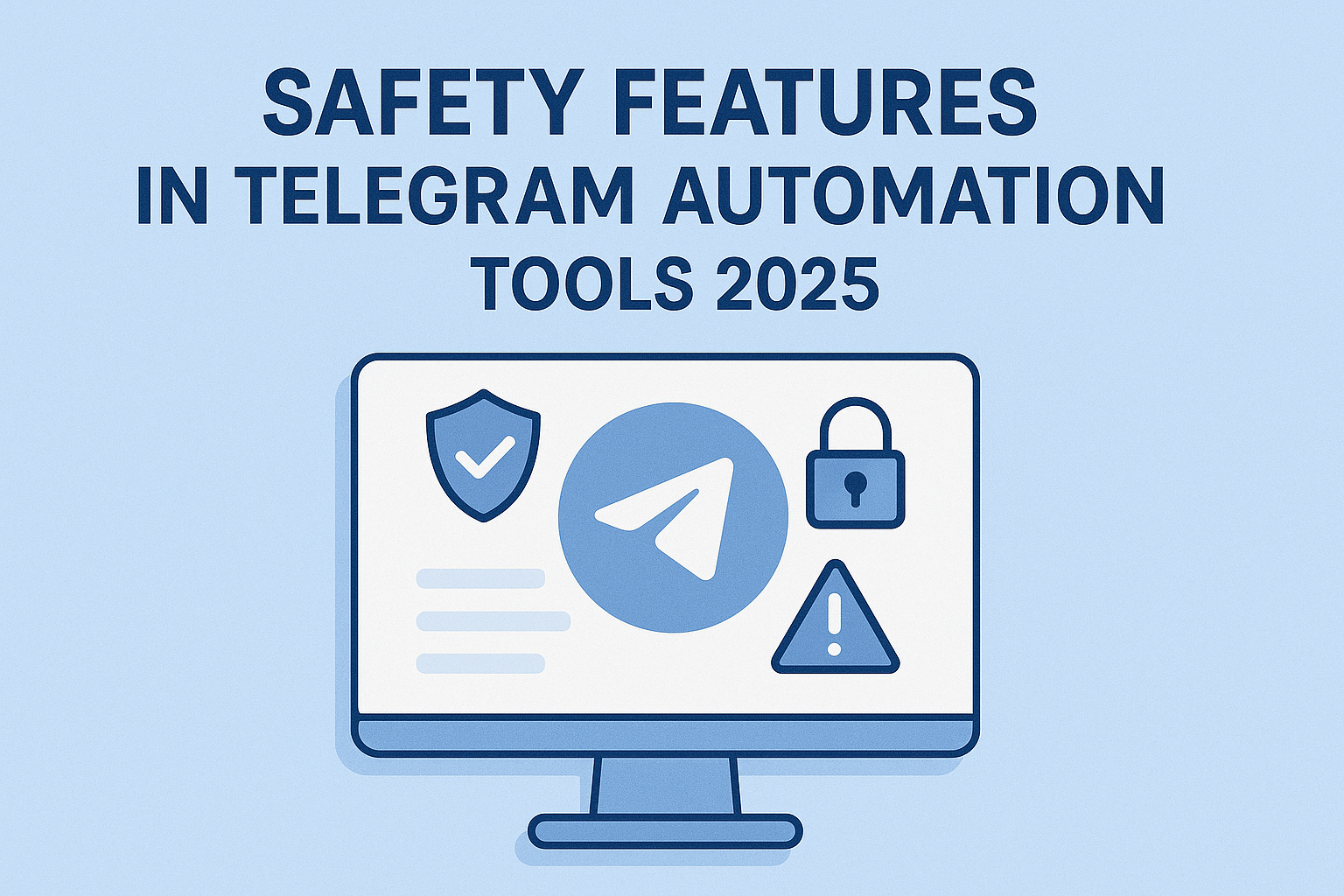Telegram Automation Tools Comparison (2025 Updated)

Video: 90-Second Automation Walkthrough
Telegram automation matured fast over the last two years. What used to be a handful of scripts is now a competitive software category with feature-rich dashboards, multi-account orchestration, and safety layers that actually keep your assets online. In this 2025 update we compare the tools you’ll encounter most: open-source bots, cloud-hosted SaaS, and full-stack desktop apps like our TELEGRAM-SOLUTIONS Software. Our lens is practical: what helps you reach qualified users, keep deliverability high, and scale without triggering spam defenses or bans.
What matters in 2025 (and why)
If you only look at feature lists, every tool seems similar. In practice, performance depends on four pillars: multi-account safety (rotation, throttling, proxy hygiene), data acquisition (reliable member scraping, including hidden users), message delivery (personalization, AFK auto-reply, reaction/forward workflows), and measurement (cohort-level tracking for replies, clicks, and downstream conversions). Teams that win on Telegram combine these into a repeatable pipeline instead of chasing raw volume.
Tools we’re comparing
- TELEGRAM-SOLUTIONS Software: desktop app with 43+ features, designed for agencies and growth teams. Unlimited accounts, multi-API safety, proxy support, hidden-member scraping, bulk ops, AFK auto-reply. Lifetime updates.
- Open-source bots & scripts: flexible and free, but maintenance-heavy. Usually lack safety guardrails, randomized delays, or robust multi-account orchestration.
- Cloud SaaS automation: quick to start yet constrained. Account sharing risk, strict daily caps, and limited control over identity and network fingerprinting.

Feature comparison: where the differences show up
1) Multi-account orchestration & proxy rotation
Serious campaigns distribute throughput across aged, phone-verified accounts. The point isn’t speed; it’s consistency. Our software lets you load dozens (or hundreds) of accounts, assign unique proxies, and randomize delays, send windows, and sequences. Open-source tools can do this with heavy tweaking and custom code; SaaS tools usually cap daily actions and abstract away networking, which becomes a bottleneck right when you need scale.
2) Scraping reach & data hygiene
Most off-the-shelf bots scrape visible members and call it a day. That’s not enough in competitive niches. You want robust hidden-member scraping, message scraping for engagement mapping, premium/user-status filters, and the ability to export a small QA sample for manual inspection. Poor inputs produce noisy campaigns, lower reply rates, and more user complaints. In 2025, data hygiene is your biggest deliverability lever.
3) Delivery, reactions, and AFK auto-reply
“Just send” is a path to account limits. High-performing teams stagger sends, vary openers, limit links, and follow up with contextual reactions or auto-replies that keep the conversation human. A/B testing two copy angles at a time (e.g., benefit vs. social proof) is enough to see a clear winner after a few cohorts. Desktop apps give you the most control here; open-source bots often require custom logic; SaaS tools tend to be too rigid.
4) Safety layers that actually work
Rate limits and randomization matter, but the details decide whether accounts last: rotating proxies, multi-API usage, realistic pacing, identity separation, and immediate opt-out handling. Good tools make safe defaults easy and dangerous settings hard. That single design decision saves budgets.

Quick scoring guide (what to check during trials)
- Onboarding speed: Can a new teammate run a small cohort in under 30 minutes?
- Warmup tooling: Built-in reactions, small talk, and profile edits that mimic normal use.
- Scrape fidelity: Does it capture hidden members and recent activity? Can you export QA samples?
- Personalization depth: Dynamic fields (first name, last seen, group), plus safe templates.
- Safety defaults: Random delays, send windows, throttling, proxy per account, and multi-API.
- Analytics: Delivery, replies, and click-through separated by cohort and copy variant.
- Support & updates: How fast do they ship fixes? Is there real guidance, not just help docs?
Who should pick what?
Solo operators & testers: Open-source can work for learning the ropes. Expect to invest time into
setup, maintenance, and guardrails. Keep volumes tiny, rotate slowly, and document what breaks.
In-house growth teams: Desktop apps with account-level control hit the sweet spot: you keep identity,
network, and data where they belong, while gaining the speed to iterate. Our
TELEGRAM-SOLUTIONS Software was built with this audience in mind.
Agencies: The bottleneck is operational consistency. You need templated projects, reusable targeting,
and audit-ready reporting. Lifetime updates beat monthly SaaS caps quickly.
Sample workflow that scales safely
- Define the ICP (niche, problem, desired outcome) and identify 5–10 groups/channels with clear intent.
- Scrape & filter for recent activity, profile photo, premium status; remove obvious bots; export a QA slice.
- Prepare 2 message variants using dynamic fields and a single CTA (reply or one clean link).
- Warm up accounts for a few days: joins, reactions, small posts; then ramp slowly with randomized delays.
- Send & track delivery, replies, and clicks by cohort. Annotate tests so the learning survives the week.
- Iterate on targeting + angle. Keep what works, retire what doesn’t. Protect reputation by honoring opt-outs.
Comparison snapshot
| Criteria | TELEGRAM-SOLUTIONS | Open-Source Bots | Cloud SaaS |
|---|---|---|---|
| Multi-account safety | Built-in rotation, proxy per account, randomized delays, multi-API | DIY scripting, fragile | Limited / opaque |
| Scraping (incl. hidden) | Yes, with filters | Varies by repo | Usually basic |
| AFK auto-reply & reactions | Native workflows | Possible with code | Some, rigid |
| Analytics | Cohort + variant reports | Manual exports | Basic dashboards |
| Control over identity/network | Full control locally | Full control (complex) | Low control |
| Total cost over 12 months | One-time license + lifetime updates | Time-heavy, free | Recurring subscription |
Mistakes we still see (and how to fix them)
- Only chasing volume: Lower daily sends with better targeting beat raw blasts every time.
- Too many links: One offer, one CTA. Let replies carry the conversation.
- Ignoring negative signals: Remove users who opt out; don’t recycle them into future cohorts.
- No account hygiene: Warm up, rotate, keep profiles human. Use unique proxies and realistic pacing.
- Untested copy: Split-test two tight variants; annotate wins so the team can reuse them.
The bottom line
Telegram remains a rare channel where direct, one-to-one outreach can scale profitably—if you respect the rules of the ecosystem. Tools are not magic; they are multipliers. Pick software that protects your accounts, keeps your data clean, and helps you learn faster than competitors. If you need an all-in-one stack with the right guardrails, start with TELEGRAM-SOLUTIONS Software, then graduate to specialized workflows as your volumes grow. That path compounds.
 Telegram Solutions
Telegram Solutions